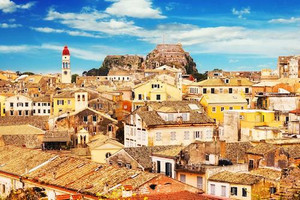
Nagasaki is a popular port of call on Japan and Asia cruises for a good reason, and not just because it’s famous for being the second Japanese city, and last city in the world, to experience a nuclear bomb attack. Here’s why cruise guests love it.
The Facts
Location: On the north west of the island of Kyushu in Japan.
Language: Japanese.
Currency: Japanese Yen.
Docking/anchoring: Ships dock at Matsugae Pier on the waterfront, next to the city centre.
Transport: There is a tram line at the pier which will get you around most places in the city, and there are usually plenty of taxis, which are metered. Drivers are honest, but they don’t often speak English.
Overview
Nagasaki is a picturesque city surrounded by mountains, sitting at the head of a long bay and a natural harbour, and resembling an amphitheatre looking out to sea. It has a long history, starting out as a small fishing village secluded by harbours, but eventually becoming a centre of Portuguese other European influence from the sixteenth through to the nineteenth centuries. In modern history, however, Nagasaki, however, is most famous for being the second Japanese city, and last city in the world, to experience a nuclear bomb attack. North of the city was destroyed in seconds, and around 40,000 people were killed instantly. The city was rebuilt after the war, with new homes, temples and churches, along with completely new structures including the Atomic Bomb Museum and Peace Park. The city remains rich in the shipbuilding industry, with a number of cruise ships having been built there.
Don’t Miss
The Atomic Bomb Museum is a sombre if exceptional commemoration of the bombing of Nagasaki through various artefacts and exhibits, including burned clothing and pottery, mangled rocks, and a clock which stopped at the precise time of the explosion.
The Peace Park is located just north of the hypo-centre, and a lovely space watched over by the bronze Nagasaki Peace Statue. Other sights here include the dove-shaped Fountain of Peace, and the Peace Symbol Zone sculpture garden.
Suwa-jinja is a huge, impressive shrine situated the top of a forested hill, and reached by multiple staircases. Dating back to 1625, it is surrounded by statues of komainu, or protective dogs.
Glover Garden is close to the pier where cruise ships dock, and where you’ll find some former homes of the Meiji period reassembled by European residents of the city. A lovely hillside garden, it was named for the Scottish merchant, Thomas Glover. Take the moving walkways up to the top, and walk back down.
Teremachi is a neighbourhood which is home to two famous temples. The Sojuki-ji was built by a Chinese monk in 1629, and the Kofuku-ji, which is just over a kilometre away, dates back to the same era, and is noted for the Ming architecture of the main hall.
Best Photo Op
Besides the moving memorials and statues in the Peace Park, the best panoramic view can be enjoyed from the top of Minami-Yamate hill at Glover Garden.
Shopping
Nagasaki isn’t particularly well known for shopping beyond the typical tourist trinkets and souvenirs, however, Youme Saito is located next to Dejima Wharf in the downtown area, a shopping plaza with plenty of shops including clothing boutiques, and Kinokuniya bookstore with English books and magazines. The hilly walk up to the entrance of Glover Garden has tourist shops and places to grab a snack en route.
Food and Drink
Food is a major part of the culture of Japan, and there are plenty of places near the pier and at sightseeing spots to grab a snack. Some of the offerings have been influenced by European visitors of the centuries, however, things to try include Nagasaki Castella, a type of sponge cake originally introduced by the Portuguese, and chanpon, a hearty noodle soup made with seafood.
Pick of the Excursions
There is plenty to see in Nagasaki for first time visitors, and to enjoy all the best sights without the hassle of exploring on your own, or tackling the language, a city tour is a great option.
If you have visited the city before, a trip to Dejima is worth considering. Originally built for the Portuguese missionaries in the seventeenth-century, it’s a fan shaped island and National Historical Site.
If you are blessed with good weather, it’s a day-long trip to Mt. Inasa, which rises over 1,700 metres to the west of Nagasaki, but the view from the top is worth the effort. You reach the summit by way of a thrilling cable car ride.
- By:
- Joanna Hall
Reviews
-
Love Nagasaki
We did a mini expedition cruise to some out of the way Japan ports about 10 years ago and loved it. Nagasaki was great, would go back only it's not easy to get to
-
Curious
I have never been to Nagasaki but it's on my list to go....my grandfather was american and fought in WW2, and he made a visit there years after the bomb was dropped as part of a reunion tour of Japan. He said it was humbling and the place was really nice, and the people were lovely. I would love to go myself one day.






